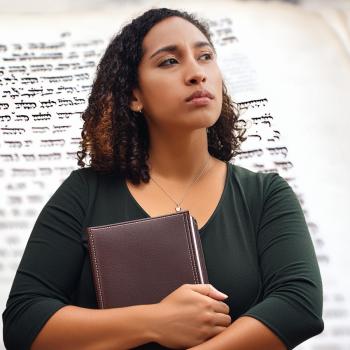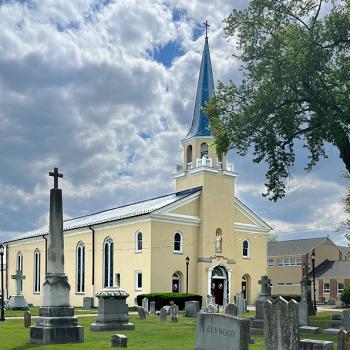“Remember you are but dust and to dust you shall return.” With these words, The Rev’d Canon H.W. Herrmann, Rector of St. David of Wales Episcopal Church in Denton, marked the foreheads of approximately 30 early morning worshipers on Ash Wednesday, Feb. 18, 2015.
The familiar words of the readings and prayers swirled around me. I read the collect of the day, “Almighty and everlasting God, who hatest nothing that thou hast made, and dost forgive the sins of all them that are penitent . . .”
God, who “hatest nothing that thou has made,” and yet as I prepared my own soul for this time of purification, I think how much hatred permeates the religious world.
The readings for the morning continued, the familiar words encouraging me to consider the state of my own soul as I sat in the chilly, brick-walled sanctuary with its red carpets, red cushions on the dark wood pews and kneeling rails, altar with the cross fully draped in purple and hidden for this season. The altar itself had been moved for this season to its original position, fully against the east wall of the sanctuary, so priest and parishioners alike will face east during the prayers.
From the book of Joel, the liturgist read, “Yet even now,” says the LORD, “return to me with all your heart, with fasting, with weeping, and with mourning; and rend your hearts and not your garments.” From the Psalms, “As far as the east is from the west, so far has he removed our sins from us.” From the second epistle to the church at Corinth, “we entreat you not to accept the grace of God in vain.” And then my favorite readings from the Gospel of Matthew as Jesus speaks to the masses surrounding him. I never cease to be amazed that he said to them, “When you give alms . . . when you pray . . . when you fast.”
Could Jesus say with that same assurance now that the general public would, as a matter of routine, participate in those three things? Rev. Hermann, during the short homily, reminded us that this time of expected giving, praying, fasting is not about us, as in “I’ll fast so I can lose some weight,” but about taking 40 days to benefit spiritually so we can honor God. This is one of two especially lengthy times of preparation before the two great events about Jesus: first, the Incarnation, celebrated at Christmas; second the Resurrection, celebrated at Easter.
Rev. Hermann read to us the brief history of Lent and then, “I invite you, therefore, in the name of the Church, to the observance of a holy Lent, by self-examination and repentance; by prayer, fasting, and self-denial; and by reading and meditating on God’s holy Word. And, to make a right beginning of repentance, and as a mark of our mortal nature, let us now kneel before the Lord, our maker and redeemer.”
And so we did, making our way to the kneeling rails before the altar, receiving the ashes, “remember you are but dust,” returning to our seats, to the kneeling rails there, to pray together the great penitential psalm, written by the great king and great sinner David.
Have mercy on me, O God, according to your loving-kindness;
in your great compassion blot out my offenses.
. . .
Had you desired it, I would have offered sacrifice; but you take no delight in burnt-offerings.
The sacrifice of God is a troubled spirit; a broken and contrite heart, O God, you will not despise.
The Litany of Penance followed, taking us into the labyrinth of multiple sins of commission and omission, of pride, hypocrisy and impatience, of selfishness and indulgence, of frustration, envy and greed, of blindness and indifference to the sufferings of others, of our uncharitable thoughts and pollution of creation.
Slowly, as a gathered congregation, we confessed, repented, and sought mercy, followed by the reminder that God “pardons and absolves all those who truly repent, and with sincere hearts believe his holy Gospel.”
We offered peace to one another and moved to the Liturgy of the Holy Communion (where I had learned ahead of time that a gluten-free option would be available). As the service ended, we again went to our knees for the final prayer, the Prayer of St. Francis:
Lord, make me an instrument of thy peace.
Where there is hatred, let me sow love;
Where there is injury, pardon;
Where there is doubt, faith;
Where there is despair, hope;
Where there is darkness, light;
Where there is sadness, joy.
O divine Master, grant that I may not so much seek
To be consoled as to console,
To be understood as to understand,
To be loved as to love;
For it is in giving that we receive;
It is in pardoning that we are pardoned;
It is in dying to self that we are born to eternal life.
It was a good way in a lovely church to begin the season. I especially appreciated the visitor-friendly bulletin, offering careful guidance as to when to sit, stand, and kneel. Such care makes it possible even for one not trained in this manner of worship to enter fully into the experience without missing a beat.
[Note: the column is scheduled to run in the Feb. 20, 2015 print and online editions of the Denton Record-Chronicle]
Additional Thoughts
Of all the “mystery worship” services I have done, this was the easiest for me, mainly because I am so very familiar with the service, having used this exact liturgy as I led the Ash Wednesday services during my years as an active UMC pastor. I didn’t have to wonder about what would happen next, or sort my way through unfamiliar terms, or try to sing songs I didn’t know (there was no music at this service), but could simply relax into the deep familiarity and concentrate on the time of prayer and self-examination. It didn’t matter that I was a stranger there, as I was not a stranger to the words or rhythms of worship.
I’ve personally spent so much time in non-liturgical churches recently that being in one like this does much for me. I have lost count, but have probably been in nearly 30 different churches since I started this venture in July, 2014. Much of my time has been spent in non-denominational churches because, frankly, they are the ones that show growth and tend to attract attention and curiosity.
There’s not much curiosity about the The United Methodist Church, and, aside from a few notable exceptions, little attention paid to it, either by local communities or the national scene. Outside the couple of thousand who will attend General Conference, and the support teams around them, no one really cares if the UMC exists, or splits, or splinters or simply gasps it last and dies. We’re just not having any real impact any longer. I think it is the same with the Episcopal Church. They are lovely and enjoyable and offer a known quantity–and who cares?
The era of the denomination has nearly ended, I suspect. Something else will rise to take it’s place, and hopefully, something that will speak of the sacred, of sin, of repentance, of reconciliation, of holiness, and of resurrection hope suffused with grace.
But it may not. And that brings me both sorrow for the present and fear for the future.













